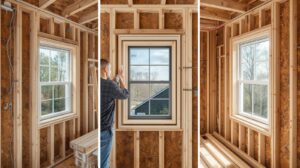The digital world’s insatiable demand for compute power and rapid deployment speed is fundamentally changing how we build data centers. The traditional, years-long construction process is no longer viable for many organizations that need to operate at the speed of business. Enter the era of the modular data center—a revolutionary approach that offers agility, efficiency, and scalability. But what exactly is a modular data center, and how do you choose the right type for your project?
This complete guide will demystify these modern facilities, exploring everything from basic definitions and key advantages to the critical structural engineering that ensures their long-term success. Whether you’re considering a skid-mounted solution or a fully containerized data center, understanding these concepts is the first step toward a more resilient and flexible IT infrastructure.
What is a Modular Data Center? A Clear Definition
At its core, a modular data center is a facility composed of prefabricated data center modules that are manufactured off-site in a controlled factory environment. These modules—containing everything from IT racks and cooling systems to power distribution—are then transported to the desired location for final assembly and commissioning. This approach stands in stark contrast to traditional “stick-built” data centers, which are constructed entirely on-site from the ground up.
suggestion: skid data center structural engineer
These designs can encompass everything from individual power and cooling modules that augment an existing facility to entire, self-contained data halls. The two most common forms are:
- Skid-Mounted Data Centers: Key components (like power distribution units, UPS systems, or cooling units) are pre-assembled onto a structural steel frame or “skid.” These are often used as functional blocks within a larger data center white space.
- Containerized Data Centers: A complete data center is housed within a standard ISO shipping container. This is a truly all-in-one, portable, and weather-resistant solution.
Why Go Modular? The Game-Changing Advantages
The industry-wide shift towards prefabrication is driven by several compelling benefits that address the core challenges of modern IT.
1. Unmatched Deployment Speed
Factory fabrication occurs concurrently with on-site preparation (like pouring the foundation), slashing overall project timelines by 30-50%. This accelerated deployment speed allows businesses to respond to market demands or internal growth in weeks or months, not years.
2. Predictable Scalability
Scalability is baked into the design. Organizations can start with the capacity they need today and add identical data center modules as demand increases. This “pay-as-you-grow” model eliminates the massive upfront capital expenditure on overbuilt infrastructure that might sit unused for years.
3. Enhanced Efficiency and Lower PUE
The controlled factory environment allows for precision manufacturing and rigorous testing, leading to optimized performance. Modular units often achieve excellent Power Usage Effectiveness (PUE) due to integrated, high-efficiency cooling systems, optimized airflow management, and reduced energy loss, leading to lower operational costs.
4. Improved Cost Predictability
With most components manufactured and integrated off-site at a fixed cost, projects are far less susceptible to the weather delays, labor shortages, and material cost overruns common in traditional construction. This leads to more predictable and reliable budgeting.
5. Superior Consistency and Quality Control
Building in a factory ensures every module is built to the exact same specifications and undergoes stringent quality checks before it ever leaves the facility. This results in higher overall reliability and performance consistency across all deployed modules.
Modular vs. Traditional: A Clear Comparison
For those weighing their options, this table highlights the fundamental differences in approach and outcome.
| Feature | Modular Data Center | Traditional “Stick-Built” Data Center |
| Construction Time | Weeks to a few months | 12–24+ months |
| Scalability | Incremental, on-demand growth | Fixed capacity at initial construction |
| Initial Cost | Lower and phased | Very high, all upfront |
| Flexibility | Relocatable and reconfigurable | Fixed, permanent, and rigid layout |
| Energy Efficiency | High; optimized for low PUE | Often lower efficiency; harder to optimize |
| Build Location | Off-site prefabrication | Entirely on-site construction |
The Structural Backbone: Engineering for Resilience
The incredible benefits of modularity cannot be realized without a foundation of rock-solid structural engineering. This is where the specialized expertise of a firm like ISTA Engineers becomes the most critical component of your project. A modular data center must be engineered to withstand not only its immense operational loads but also the unique rigors of transportation and lifting.
Neglecting this phase can lead to catastrophic failure, turning a strategic investment into a liability. Key structural considerations we address include:
- Transportation and Lifting Stresses: The structure must be designed to resist the dynamic forces, shocks, and vibrations experienced during road or sea transport without any deformation or damage to the sensitive equipment inside.
- Load Capacity: Precise load calculations are essential to ensure the frame and its connection points can support the immense, concentrated weight of dense server racks, UPS batteries, and cooling units without risk of failure.
- Seismic Resilience: Especially crucial in regions like Denver, seismic bracing and analysis are non-negotiable for ensuring continuous uptime during an earthquake. This goes beyond building codes to protect the actual operation.
- Foundation and Anchorage: The design of the interface between the module and its concrete slab or ground foundation is vital to prevent settling, shifting, or failure at the point of connection.
As we detailed in our pillar article on the role of a skid data center structural engineer, this engineering discipline is the unseen foundation that guarantees the integrity and longevity of your mission-critical investment.
ISTA Engineers: Your Expert Partner in Modular Design
At ISTA Engineers, we are more than just structural consultants; we are your dedicated partners in building resilient and efficient digital infrastructure. Our expertise is specifically tailored to the unique challenges of prefabricated data center design. Our services include:
- Comprehensive Structural Analysis & Design: Ensuring your skid-mounted or containerized modules are engineered for absolute integrity during transport, installation, and long-term operation.
- Precise Load Capacity Calculations: Precisely determining structural requirements to safely support all IT and MEP equipment.
- Advanced Seismic Design & Bracing: Protecting your mission-critical investment from seismic activity with designs that often exceed minimum code requirements for maximum operational continuity.
- Foundation & Anchorage Design: Creating a secure, stable, and durable interface between your modules and their permanent foundation.
We help you navigate the entire process, ensuring your modular data center is built on a foundation of unwavering quality and safety.
Frequently Asked Questions (FAQs)
1. What are the main advantages of a modular data center?
The primary advantages are faster deployment speed, predictable scalability, lower and more predictable costs, higher energy efficiency (better PUE), and superior quality control from factory fabrication.
2. What is the difference between a modular and a traditional data center?
A traditional data center is built entirely on-site over many months or years with a fixed capacity. A modular data center is built from pre-engineered modules constructed off-site in a factory, leading to much faster deployment and greater flexibility.
3. Are modular data centers secure and reliable?
Absolutely. When designed and engineered correctly, modular data centers can meet the same security and reliability standards (including Uptime Institute Tiers) as traditional facilities. Their factory-built nature can even enhance reliability through improved quality control.
4. How does the total cost of ownership (TCO) compare?
While initial capital expenditures can be comparable, the TCO for a modular solution is often lower due to reduced construction time (leading to faster revenue generation), superior energy efficiency (lower operational expenses), and the ability to scale precisely with demand, avoiding the cost of over-provisioning.
5. Are modular data centers only for large “hyperscale” operations?
No. While Hyperscale Data Centers use them for rapid expansion, modular designs are perfect for small and medium businesses, Edge Computing applications, and any organization that needs agility and wants to avoid large, custom construction projects.
6. What role does structural engineering play in a modular data center’s success?
Structural engineering is critical. It ensures the module can be safely transported, can support the heavy IT load, and will perform reliably in its final environment, especially in seismic zones. It’s a core service we provide at ISTA Engineers because it’s the foundation of the entire system’s reliability.
7. How are modular data centers managed?
They are managed using Data Center Infrastructure Management (DCIM) software. DCIM is crucial for providing a centralized view for monitoring and managing these potentially distributed assets, ensuring operational efficiency from a single console.
Conclusion: The Future is Modular, Built on a Foundation of Quality
Modular data centers represent the future of scalable, efficient, and rapid IT infrastructure. From skids to containers, these solutions provide unmatched flexibility and speed compared to traditional builds. However, these benefits are only realized when they are built upon a flawless engineering foundation.
By partnering with an expert engineering firm, organizations in Denver and beyond can design and deploy modular facilities that are resilient, mission-critical ready, and optimized for long-term growth.
Ready to leverage the power of modular design for your next project? Contact the experts at ISTA Engineers today for a consultation. Let’s build the future, together.




